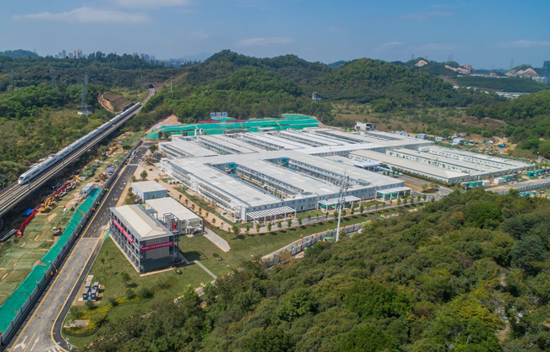“Shenzhen Speed” in the New Era! CSCEC Science and Industry Builds Shenzhen Emergency Hospital in 20 Days
-
[ Date: 2020-02-24]

According to the instructions of the Municipal Party Committee and the Municipal Government of Shenzhen and the Bureau Pubic Works of Shenzhen Municipality, the Shenzhen Emergency Hospital Project, with reference to Huoshenshan Hospital and Leishenshan Hospital in Wuhan, was completed in 20 days, covering a floor area of 68,000 square meters and a construction area of 59,000 square meters. It provides 1,000 beds (including 16 beds in ICU).
The project had a tight schedule and encountered many difficulties. The challenges were as daunting as those brought by the construction of Huoshenshan Hospital and Leishenshan Hospital in Wuhan. The main difficulties included: First, design and field leveling that needed excavation, backfill must be completed within the very short 20-day construction period. Second, the construction had to happen during the Spring Festival, when the vast majority of migrant workers had left for hometown from Shenzhen, and this was exacerbated the difficulty in mobilization of resources due to the restricted flow of people and materials during the harsh epidemic situation. Third, with only one access, the project had to be built under very unfavorable transportation conditions. Fourth, the general double-decker ward design, which made Shenzhen Emergency Hospital different from other similar hospitals, meant exponentially increased difficulty in lifting and configuration of drainage and ventilation. Fifth, since the construction coincided with the rainy season, normal works could be disturbed by abundant precipitation. Sixth, when people in the whole country stayed at home, more than 10,000 builders had to be gathered together on a construction site close to the only hospital for COVID-19 patients in Shenzhen. Epidemic prevention and control could not be a more arduous task.
Follow the order to fight the battle against the epidemic
Faced with such a challenging construction task, China Construction Science and Industry Construction Limited (“CSCEC Science and Industry”) immediately responded to the call by quickly setting up an construction headquarters headed by Wang Hong, Secretary of the Party Committee and Chairman of the company, who directly deployed and directed the construction works. The headquarters made a company-wide “call to fight the epidemic” and was soon echoed by a management team of 455 members across business lines (design, procurement, construction, etc.), professions (civil engineering, steel structure, electromechanical, decoration, municipal pipe network, etc.), locations (areas on construction sites, assembly yards, factories, etc.), levels (project departments, work areas, teams), and working hours (day shift, night shift).
In the peak period, the project department operated 489 engineering vehicles and equipment such as dump trucks, excavators, and truck-mounted cranes in a single day. There were 2,372 management (day shift + night shift) and 10,416 labor workers (day shift + night shift) who did their best to fight this “great assembly battle” that has never seen before in the history of CSCEC Science and Industry and even in the construction history of Shenzhen, combining off-site container assembly with scientific and technological means like template modeling and BIM, intelligent manufacturing, and 5G communication system.
The race started with sprint and the battle was a decisive one
On January 31, the project was officially commenced, and resources procurement began in full swing;
On February 1, the building plan was completed; the site clearance was completed, covering an area of 92,000 square meters (including Plot A);
On February 3, pouring of bottom slabs began, and the first container was assembled in the assembly yard;
On February 4, the construction drawings were completed;
On February 6, the first container arrived at the site;
On February 7, all the bottom slabs were poured in an area of 29,000 square meters;
On February 8, electromechanical construction started (total works: 65,000m cables, 45,000-square-meter air ducts, and 30,000m water pipes);
On February 9, decoration works started (total works: 3,9000 square meters, including 35,000-square-meter PVC floor and 200,000m gluing);
On February 12, all the 2,560 containers were assembled off-site;
On February 14, all the containers were lifted, with 40 units lifted every hour during the peak period;
On February 18, electromechanical construction, decoration, municipal pipe networks, and roads were basically completed;
On February 19, the project was generally completed;
On February 20, ICU and the first batch of nursing units were handed over to the Third People’s Hospital of Shenzhen.
【print】 【closed】
